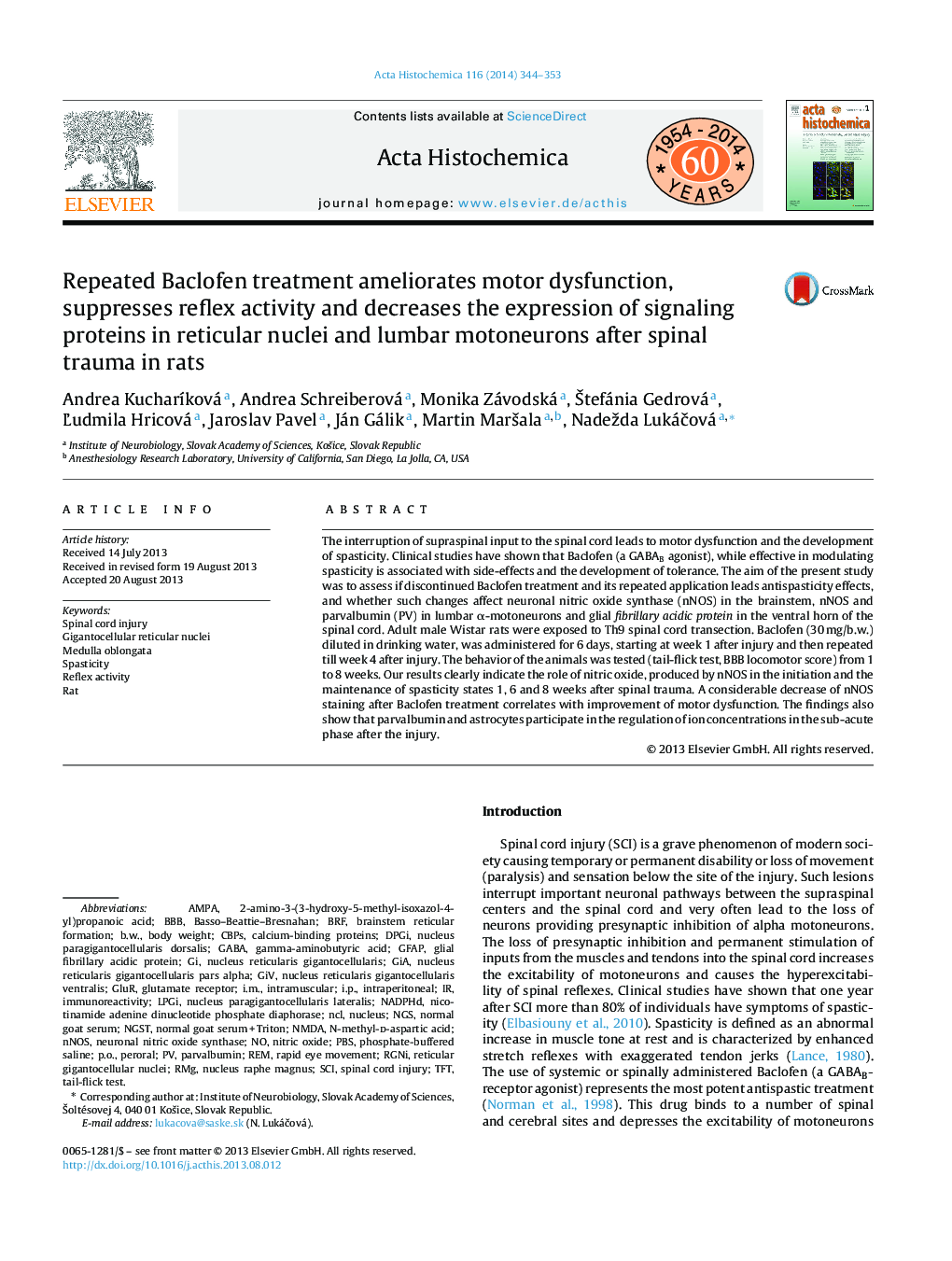| Article ID | Journal | Published Year | Pages | File Type |
|---|---|---|---|---|
| 1923587 | Acta Histochemica | 2014 | 10 Pages |
The interruption of supraspinal input to the spinal cord leads to motor dysfunction and the development of spasticity. Clinical studies have shown that Baclofen (a GABAB agonist), while effective in modulating spasticity is associated with side-effects and the development of tolerance. The aim of the present study was to assess if discontinued Baclofen treatment and its repeated application leads antispasticity effects, and whether such changes affect neuronal nitric oxide synthase (nNOS) in the brainstem, nNOS and parvalbumin (PV) in lumbar α-motoneurons and glial fibrillary acidic protein in the ventral horn of the spinal cord. Adult male Wistar rats were exposed to Th9 spinal cord transection. Baclofen (30 mg/b.w.) diluted in drinking water, was administered for 6 days, starting at week 1 after injury and then repeated till week 4 after injury. The behavior of the animals was tested (tail-flick test, BBB locomotor score) from 1 to 8 weeks. Our results clearly indicate the role of nitric oxide, produced by nNOS in the initiation and the maintenance of spasticity states 1, 6 and 8 weeks after spinal trauma. A considerable decrease of nNOS staining after Baclofen treatment correlates with improvement of motor dysfunction. The findings also show that parvalbumin and astrocytes participate in the regulation of ion concentrations in the sub-acute phase after the injury.
